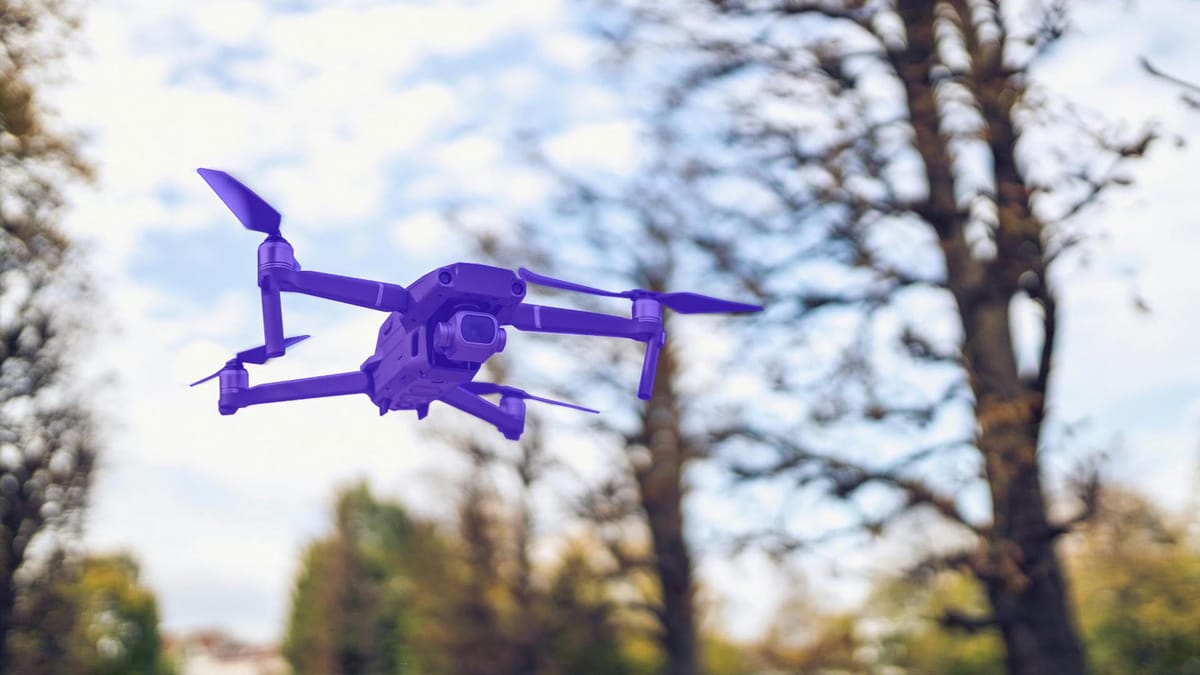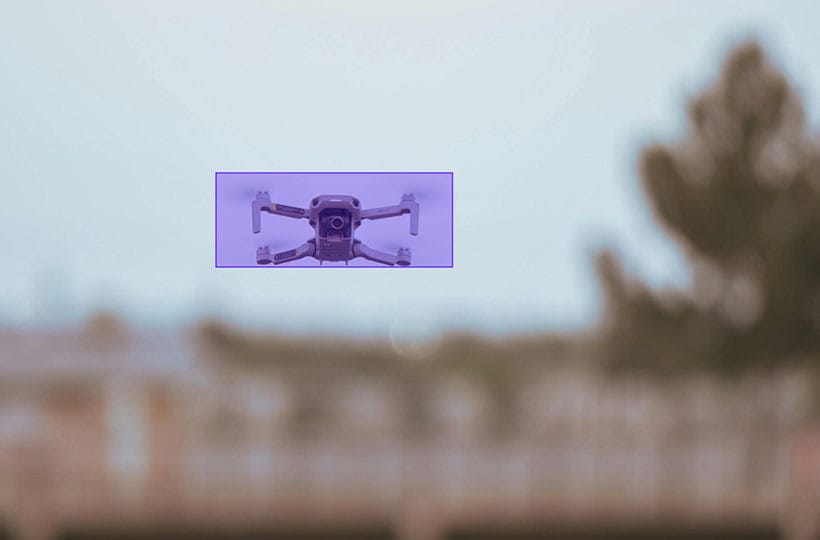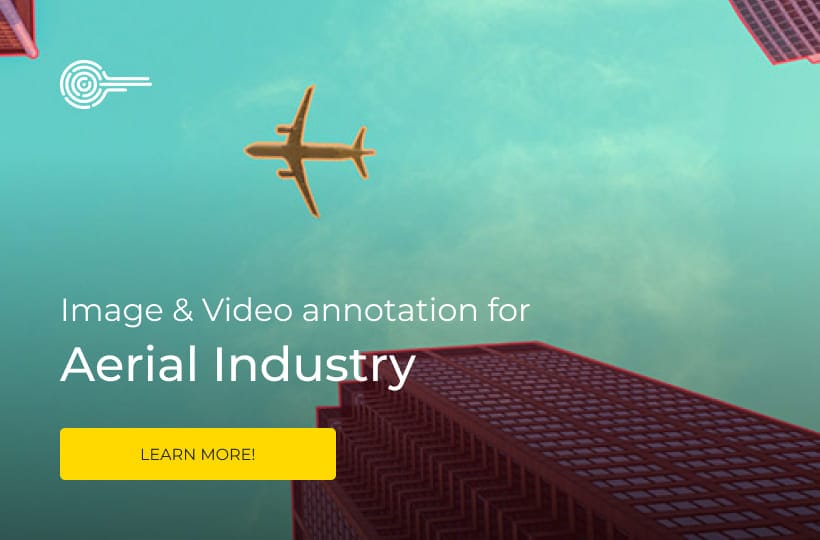Annotating Aircraft Inspection Images for Predictive Maintenance

The rapid development of artificial intelligence has found one of its most significant applications in aviation. Precision is an absolute priority in an industry where every day of aircraft downtime costs millions, and the price of error is measured in lives.
At the crossroads of advanced technologies and stringent safety requirements, the need arises to annotate inspection images for predictive maintenance. This strategic shift allows for forecasting a component's likely failure and planning repairs or replacements in advance, avoiding unplanned downtime.
Advances in computer vision have made this transition possible. However, for such systems to operate accurately and reliably, they cannot rely on raw data. High-quality annotated images are needed, which are clearly marked with defect location, defect type, and degree of criticality.
This is where the key role of annotation pipelines emerges — the systematic and expert labeling of photos and videos from technical inspections. In predictive maintenance, the quality of annotation is equal to the quality of safety. Therefore, this process becomes mandatory to create the ground truth, without which algorithms cannot work reliably in high-responsibility environments.
Key Takeaways
- AI-powered inspection reduces manual review time and costs.
- The quality of annotation is equal to the quality of safety.
- Annotation must address complex technical challenges, including distinguishing microscopic fuselage cracks from noise and managing multimodal data for comprehensive inspection.
- Expert labeling ensures resource optimization.

The Role of Data in Aviation Safety
Structured visual information is the foundation of reliable systems. Therefore, datasets of thousands of high-resolution images taken under various operating conditions are currently being actively created. This feeds computer vision systems that surpass traditional methods.
The aviation industry operates on the principle of zero tolerance for failure. Every flight, regardless of duration, depends on the absolute integrity of the components. Standardized labeling ensures consistency across different teams. Automated systems compare results with aviation regulations, flagging potential violations in real-time.
Limitations of Traditional Maintenance
The traditional approach to maintenance is predominantly reactive or schedule-based. However, inspecting components that do not require repair is expensive and leads to unnecessary aircraft downtime, which is measured in millions of dollars per day. Furthermore, checking internal systems, such as engine borescope footage, is laborious and requires high concentration.
Additionally, visual inspection performed by a human engineer is slow and dependent on subjective experience. Detecting subtle fuselage cracks or the initial stages of corrosion detection in hidden sections solely with a flashlight and the naked eye is extremely difficult.
Thus, a traditional schedule cannot prevent a sudden problem from arising because it does not analyze current operating conditions and the real state of the materials.
The Foundation of Predictive Maintenance
The strategic transition involves replacing the reactive and schedule-based model with predictive maintenance. The primary need for bringing this technology to life is the annotation of training data.
Image annotation in this case involves the detailed labeling of aircraft component inspection images for the subsequent training of computer vision models for defect detection. This process converts raw pixels into ground truth data, necessary for a neural network to be able to "see" what constitutes damage to an aircraft and what does not. Such annotation typically includes the following labeling types:
- Bounding Boxes. Used for quickly isolating apparent defects, such as dents or noticeable cracks.
- Segmentation Masks. Used for the most accurate outlining of irregularly shaped defects, such as corrosion or fluid leaks.
- Keypoints. Used for marking specific critical points, such as fasteners, bolts, or panel corners, to check their position and integrity.
- Attributes. Additional tags and classifications that provide context, such as metal type, fuselage zone, or severity level of the damage.
Types of Defects Most Frequently Annotated
The goal of annotation in aviation is to teach the model to distinguish critical structural problems from ordinary noise. The most common categories of defects sought in inspection images and their corresponding annotation forms include:
These high-precision labels create the ground truth that allows PdM models to make reliable predictions about the aircraft's condition.
Thus, annotation solutions for aviation are an element of the safety strategy, ensuring the long-term integrity and efficiency of the global aircraft fleet.
Technical Challenges of Annotating Aviation Defects
Annotating aviation inspection images is one of the most complex tasks in computer vision, as it requires a combination of microscopic precision and expert industry knowledge.
Defect Complexity and Required Accuracy
The main challenge lies in distinguishing signal from noise in images from drones, high-resolution cameras, and borescope footage. The annotator must clearly delineate critical defects, such as microscopic cracks, signs of corrosion, or metal fatigue, from a patch of dirt or an insect trace. Minor defects, while not a threat, often mask genuine problems, requiring AI, trained on quality data, to be able to "see through" the noise.
Many critical defects, especially initial cracks, account for only a few pixels in a high-resolution image. This requires extremely precise pixel-level segmentation, as even a slight inaccuracy in defining the defect boundary can affect the component's predicted lifespan.

Unpredictability of Shooting Conditions and Data
Inspection images are rarely taken in controlled laboratory conditions. Images can have varying lighting and angles, which change the visual characteristics of the defect. Annotators must be able to normalize these visual differences so that the AI can recognize the defect regardless of the conditions. Modern inspection is not limited to visible light. Annotation includes multimodal data:
- Thermal images. Detection of overheating or hidden structural problems.
- Ultrasound images. Detection of internal defects invisible from the outside. This requires annotation tools to be able to work and link labels between different data types.
Creating the Dataset
Annotating aviation images is a highly structured process that ensures the data entering the machine learning model is reliable and compliant with safety standards.
Step-by-Step Process of Annotating Aviation Images
To achieve high accuracy and safety, the process of creating the dataset must be clearly structured. It can be divided into the following sequential stages:
Quality and Consensus
Since the cost of error in aviation is exceptionally high, quality assurance is the top priority. For the most critical defects, Consensus Annotation, i.e., labeling by three or more independent experts, should be applied.
Systems automatically compare these labels. If the consistency is unsatisfactory, the task is sent for arbitration to the senior engineer. This process ensures that the ground truth for model training is reliable.
Business Value and Predictive Maintenance
High-quality annotation of inspection data is a direct investment that translates into financial success and enhanced safety in the aviation industry. Aircraft downtime is extremely expensive, as every day an aircraft is not flying results in lost revenue.
Predictive maintenance converts unplanned downtime into planned maintenance. AI can identify early signs of a problem and accurately predict the time until likely failure. This allows the airline to replace a component days or weeks before its critical failure. Maintenance is planned during periods of low activity or scheduled overnight stops, rather than delaying flights due to unforeseen repairs.
Optimization of Resources and Expertise
High-quality annotated data allows the AI system to effectively filter out non-essential information, optimizing the use of the most expensive resource — the time of a highly qualified engineer.
AI, trained on large and accurate datasets, can automatically identify most non-critical defects. For example, stains that are not corrosion or scratches that do not require repair. This allows highly skilled engineers to focus only on the most complex, critical cases that require human judgment, significantly increasing productivity and the accuracy of the final decision.
Compliance and Audit
In aviation, transparency and compliance with regulatory requirements are mandatory. A PdM system trained on transparent and accurately annotated data provides a clear, objective audit trail. Every AI conclusion can be traced back to a specific annotated label and instruction.
This confirms to regulators that the inspection process is objective, measurable, and complies with all safety standards, which accelerates the certification of new automated maintenance methods.
In the context of aviation, data annotation extends beyond the standard machine learning task. It is a direct investment in Safety-Critical Systems. High-quality, accurately labeled inspection data is not just a training set for algorithms, but a digital guarantor of flight safety.
They allow predictive maintenance systems not only to reduce millions in downtime but also to ensure zero tolerance for failures where a mistake costs lives. Thus, thoroughness and an expert approach to annotation in aviation are the foundation of both financial efficiency and the main value of this industry: absolute safety.
FAQ
How does AI-driven image processing improve predictive maintenance workflows?
AI-based image processing enhances predictive maintenance by automating the detection of defects before they cause failures. Algorithms analyze equipment photos and videos, identifying cracks, corrosion, or wear that may not be visible to the human eye. This allows technical teams to plan repairs in advance, reduce downtime, lower inspection costs, and improve overall system reliability.
Which object detection architectures perform best for surface defect identification?
Modified YOLOv11 variants achieve high accuracy in composite material inspections, while hybrid Vision Transformer-CNN models excel at detecting submillimeter cracks in turbine blades under varying lighting conditions.
How do drones enhance automated quality control processes?
Equipped with high-resolution and thermal cameras, they can capture detailed images of surfaces, detect cracks, corrosion, or temperature anomalies, and create accurate 3D maps of equipment or structures. When combined with AI-based analysis, drones can automatically identify defects in real time, reducing the need for manual inspections and improving both safety and efficiency.
What safeguards ensure compliance with aviation regulatory standards?
All annotation results should be triple-validated according to FAA AC 43-206 and EASA Part 145 requirements. It is also a good idea to maintain audit trails with timestamps and approvals from certified maintenance technicians.

